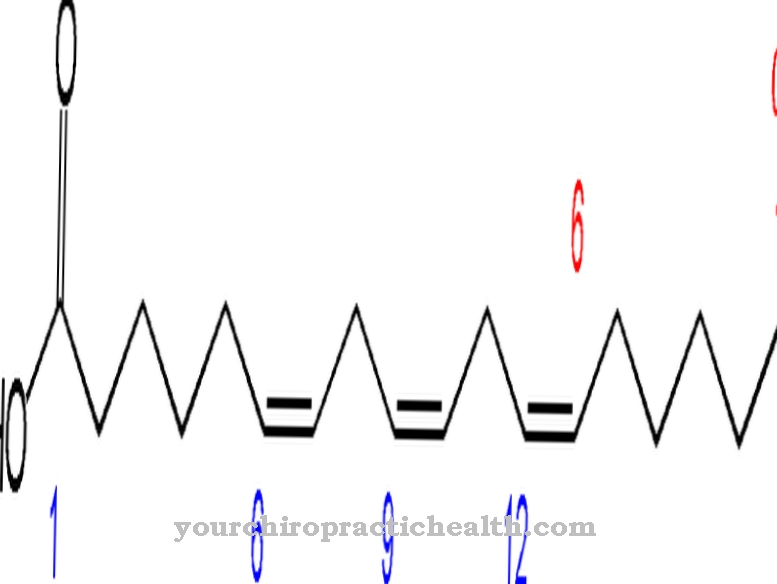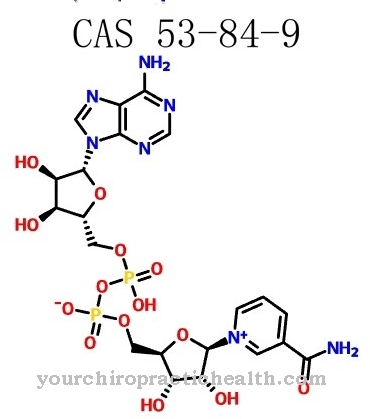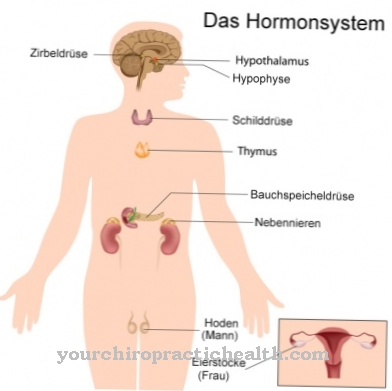Retinol is one of the A vitamins and has important functions in the body. It plays a central role in many enzymatic reactions. Both a deficiency and an excess of retinol cause health problems.
What is retinol?
Retinol is often equated with vitamin A in the medical literature. However, it is one of several active ingredients that fulfill the same functions in the organism. It therefore belongs to a group of active substances known as vitamin A.
These chemically related active substances are a group of substances whose central substance is retinol. From a chemical point of view, retinol is a diterpenoid with a hydroxyl group, so it is one of the monohydric alcohols. It is derived from isoprene, which has two double bonds in the molecule. An additional feature of retinol is its beta-ionone ring, which with the linked isoprene units forms a molecule with conjugated double bonds. The conjugated double bonds play a major role in the visual process. All compounds within the vitamin A group are in chemical interaction with one another. In addition to retinol, these active ingredients include retinol esters, retinal and retinoic acid.
Almost all active ingredients with the exception of retinoic acid can be converted into one another. Retinoic acid is formed from retinal through oxidation. However, the reverse reaction from retinoic acid to retinal no longer takes place. Retinol can be esterified to retinol ester as well as oxidized to retinal. The respective reverse reactions take place continuously in the organism. The derivatives of retinol are also made from provitamin A, beta-carotene. The direct intake of vitamin A can lead to overdosing. If the intake takes place via provitamin A (beta-carotene), an overdose is not possible because the organism limits the synthesis of the retinol derivatives as required.
Function, effect & tasks
As an active ingredient in vitamin A, retinol is indispensable for the organism as it is involved in many metabolic processes. Due to their conjugated double bonds in the molecule, retinol derivatives are important for the visual process. Furthermore, retinol ensures healthy nerve cells in all areas of the central nervous system, the brain and the spinal cord.
Retinol is also responsible for building iron into red blood cells. To a large extent, it participates in protein metabolism. It is consumed in the process. All processes associated with an increase in protein metabolism can therefore lead to a vitamin A deficiency. Retinol and its derivatives ensure normal cell growth in the skin and mucous membranes. This promotes the structure and health of various organs and tissues. The skin function is maintained through healthy cell division. Retinol can also prevent DNA damage in skin cells by strengthening the corresponding repair mechanism.
Retinol also plays a key role in bone formation. This is why children in particular need to be supplied with sufficient vitamin A. During embryogenesis, the all-trans retinoic acid (vitamin A acid) formed from retinol is an important growth factor for the embryonic nerve cells. Retinol is also instrumental in the production of the sex hormones estrogen and testosterone.
At the same time, it is also responsible for sperm and egg cell formation as well as for the function and structure of the egg and seminal ducts. In addition, Retinol strengthens the immune system by building effective barriers against germs, by increasing the effectiveness of white blood cells and by facilitating the formation of antibodies.
Education, occurrence, properties & optimal values
Retinol and its derivatives (vitamin A) can be supplied to the body both directly and indirectly via beta-carotene. Complete synthesis of retinol is not possible within animal and human organisms. Vitamin A is particularly found in animal products such as liver, cod liver oil, egg yolks, liver sausage, milk, salmon, chicken or pork. Provitamin A (beta-carotene) is absorbed through plant-based foods such as carrots, spinach, kale, pumpkin or apricots. The organism converts beta-carotene (provitamin A) into retinol and its derivatives (vitamin A) as required.
Diseases & Disorders
Both an undersupply and an oversupply of retinol lead to health problems. A deficiency in vitamin A can cause increased susceptibility to infections, eye problems, night blindness, dry skin, loss of hair and nails, iron deficiency, atherosclerosis, increased risk of cancer, increased risk of kidney stones, fatigue, exhaustion or bone growth disorders.
There are many reasons for a vitamin A deficiency. Certain diseases can interfere with fat absorption. These include diseases of the liver, gallbladder or pancreas. In the event of inflammation or stress, the protein metabolism also increases with an increased consumption of retinol. Environmental toxins, smoking, alcohol or sunlight impair the absorption and storage of vitamin A. The conversion of carotenoids into vitamin A is also hindered in diabetes or hyperthyroidism. Some drugs make the absorption of retinol worse.
Sleep pills are able to break down the stores of vitamin A in the liver. To combat the shortage of vitamin A, vitamin tablets can be administered. However, it is better to consume foods with sufficient vitamin A or provitamin A. Harmful environmental influences that make the absorption of retinol more difficult must be reduced. An overdose of vitamin A is also harmful. This can lead to diarrhea, vomiting, headaches, enlargement of the liver and spleen and, in extreme cases, even liver cirrhosis.
An oversupply of retinol often occurs with excessive consumption of meat products and especially of liver. An increased consumption of plant-based foods with a lot of provitamin A cannot lead to an overdose of vitamin A, because provitamin A is always converted into vitamin A as required.













.jpg)

.jpg)
.jpg)











.jpg)